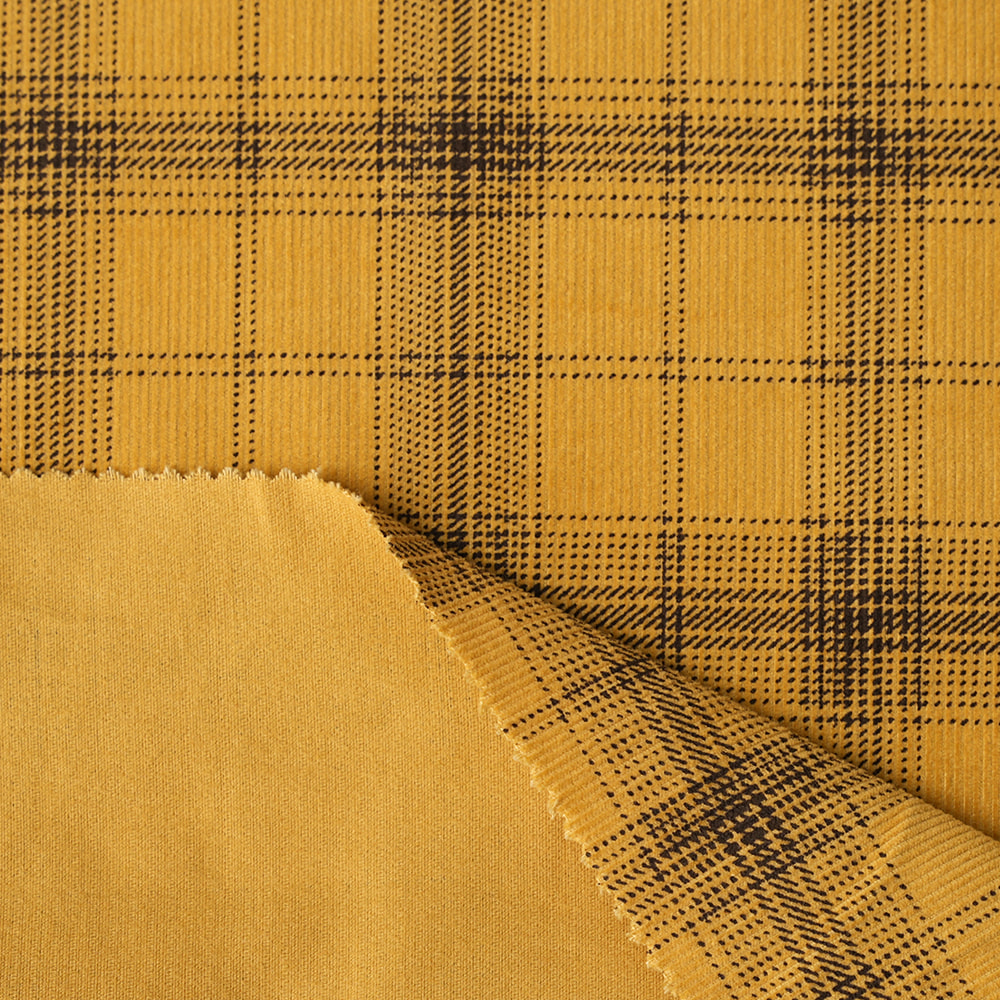Textile Industry Zone, East Hutang Town, Wujin District,213100 Changzhou,China
Technology can significantly improve the quality and efficiency of printing on corduroy fabric through advancements in various areas such as printing techniques, equipment, materials, and processes. Here are some ways technology can enhance the printing of corduroy fabric:
Digital Printing: Digital textile printing allows for high-resolution designs and intricate patterns to be printed directly onto corduroy fabric. This method reduces setup time and costs associated with traditional screen printing.Inkjet Printing: Modern inkjet printers designed for textiles can handle the unique texture of corduroy, ensuring even ink distribution and vibrant colors.Eco-Friendly Inks: Development of water-based and eco-friendly inks can reduce the environmental impact of printing and ensure safer handling and disposal.Specialty Inks: Inks designed specifically for textured fabrics like corduroy can improve adhesion and colorfastness, ensuring that the prints are durable and vibrant.Precision Print Heads: Advanced print heads can accurately deposit ink on the ridges and valleys of corduroy, ensuring even coverage and sharp details.Automated Printing Systems: Automation can increase efficiency by reducing manual intervention, minimizing errors, and speeding up the production process.

Pre-Treatment: Applying a pre-treatment solution to the fabric can improve ink absorption and adhesion, resulting in better print quality.
Heat Setting and Curing: Technological advancements in heat setting and curing processes can enhance the durability of prints, making them more resistant to washing and wear.Accurate Color Matching: Digital color management systems ensure consistent and accurate color reproduction across different batches of fabric.Software Solutions: Advanced software can simulate how designs will look on corduroy, allowing for adjustments before printing, which saves time and materials.Real-Time Monitoring: Sensors and cameras can monitor the printing process in real-time, detecting issues like misalignment or color inconsistencies and allowing for immediate adjustments.Automated Quality Control: Automated systems can inspect printed fabrics for defects, ensuring high quality and reducing the need for manual inspection.
Reduced Waste: Digital printing and other advanced techniques reduce waste by using only the necessary amount of ink and fabric.
Energy-Efficient Processes: Modern machinery and processes are designed to be energy-efficient, reducing the overall environmental footprint of textile printing.On-Demand Printing: Technology enables on-demand printing, which reduces inventory costs and allows for greater flexibility in producing custom designs.Variable Data Printing: This allows for the customization of each piece of fabric with unique designs, which is useful for personalized products.CAD and CAM Systems: Computer-aided design (CAD) and computer-aided manufacturing (CAM) systems streamline the design-to-production process, allowing for precise control over the final output.
3D Modeling: 3D modeling software can help visualize how designs will appear on the textured surface of corduroy, enabling better design decisions.Nano Coatings: Application of nano-coatings can improve the printability of corduroy by creating a more uniform surface or enhancing ink adhesion.Moisture Management: Technologies that manage moisture content in the fabric can ensure consistent print quality, especially in varying environmental conditions.
Technology enhances the quality and efficiency of printing on corduroy fabric through advancements in printing techniques, equipment, inks, and processes. By leveraging these technological improvements, manufacturers can achieve more vibrant, durable, and high-quality prints while also increasing production efficiency and sustainability.












